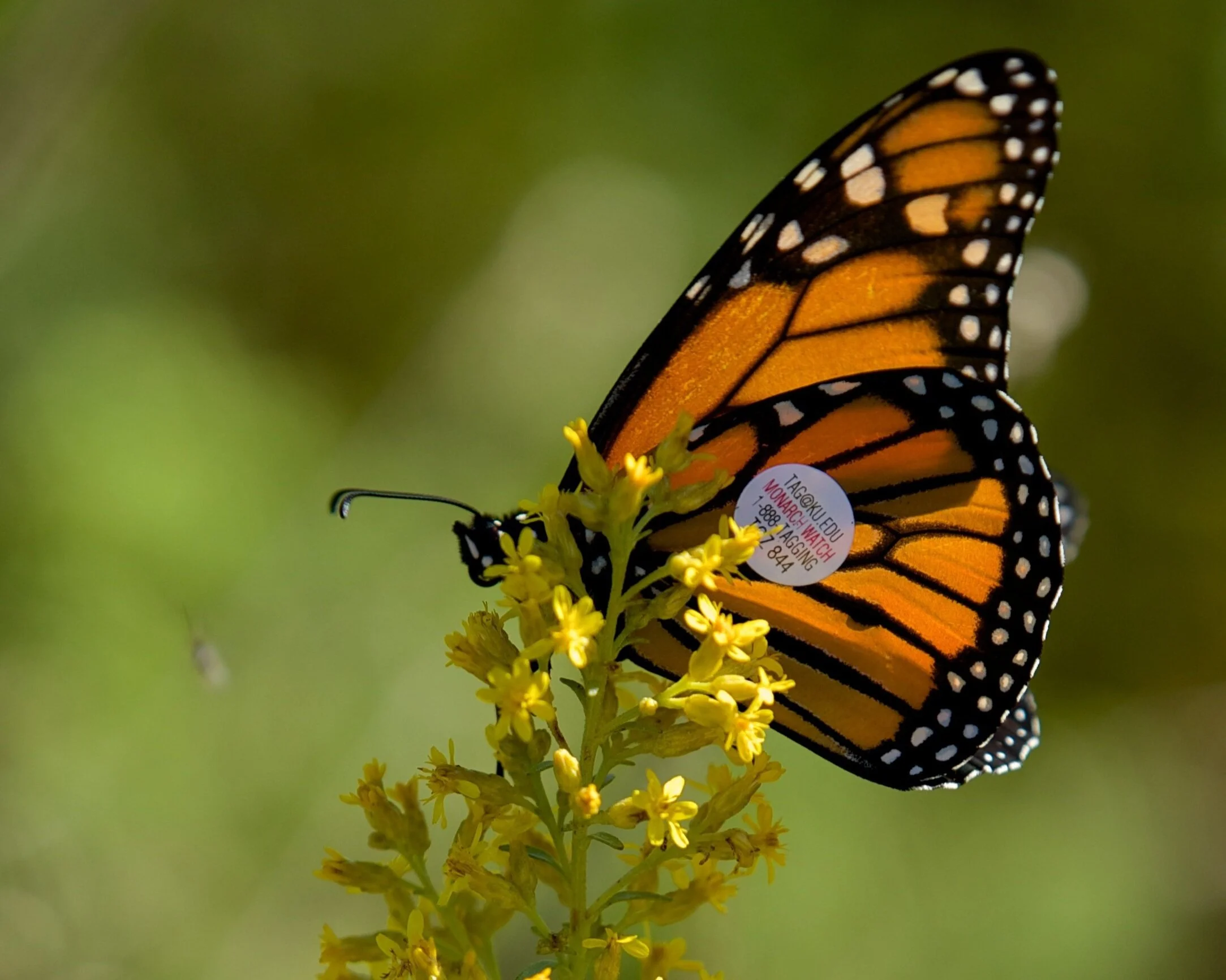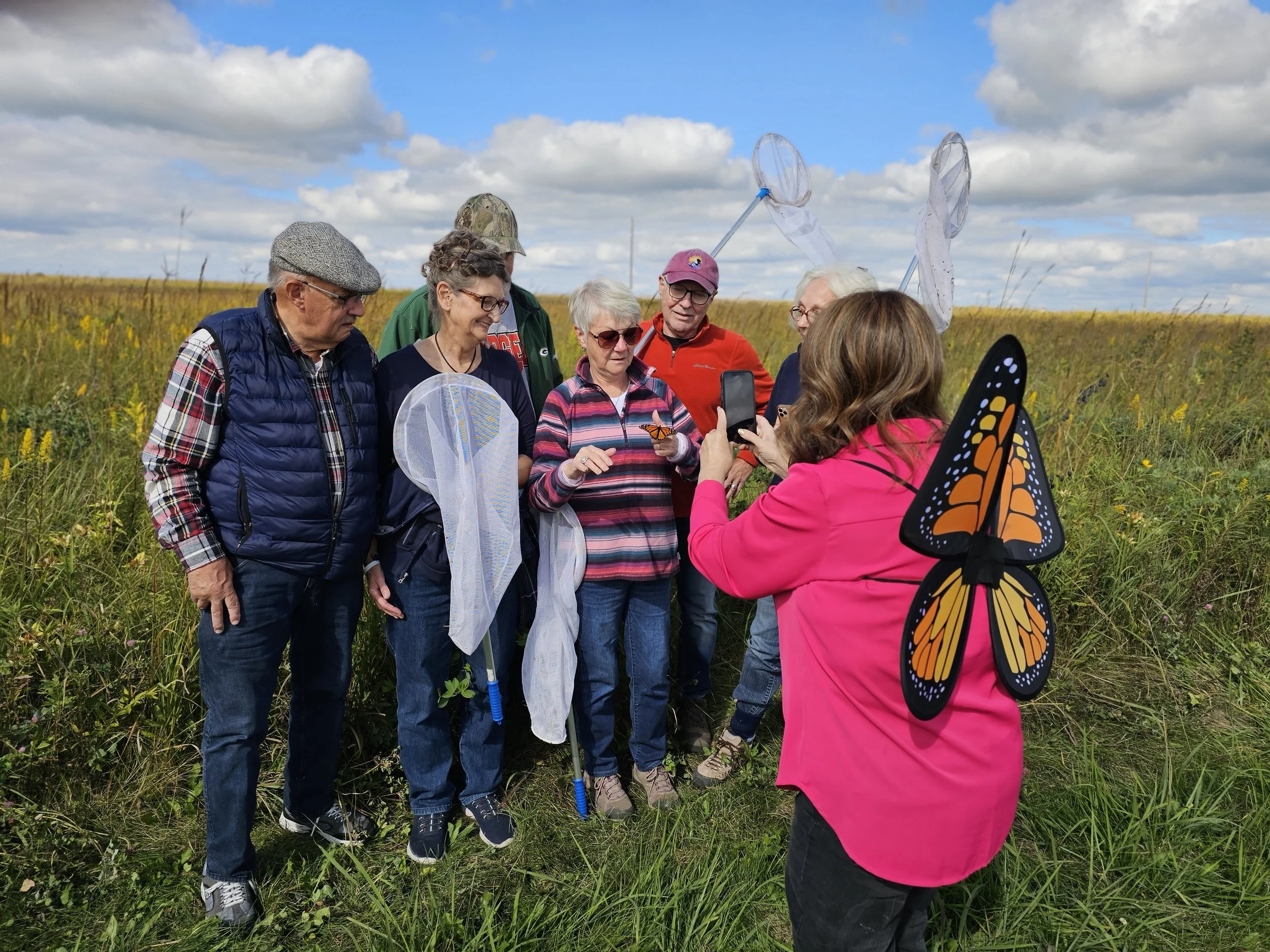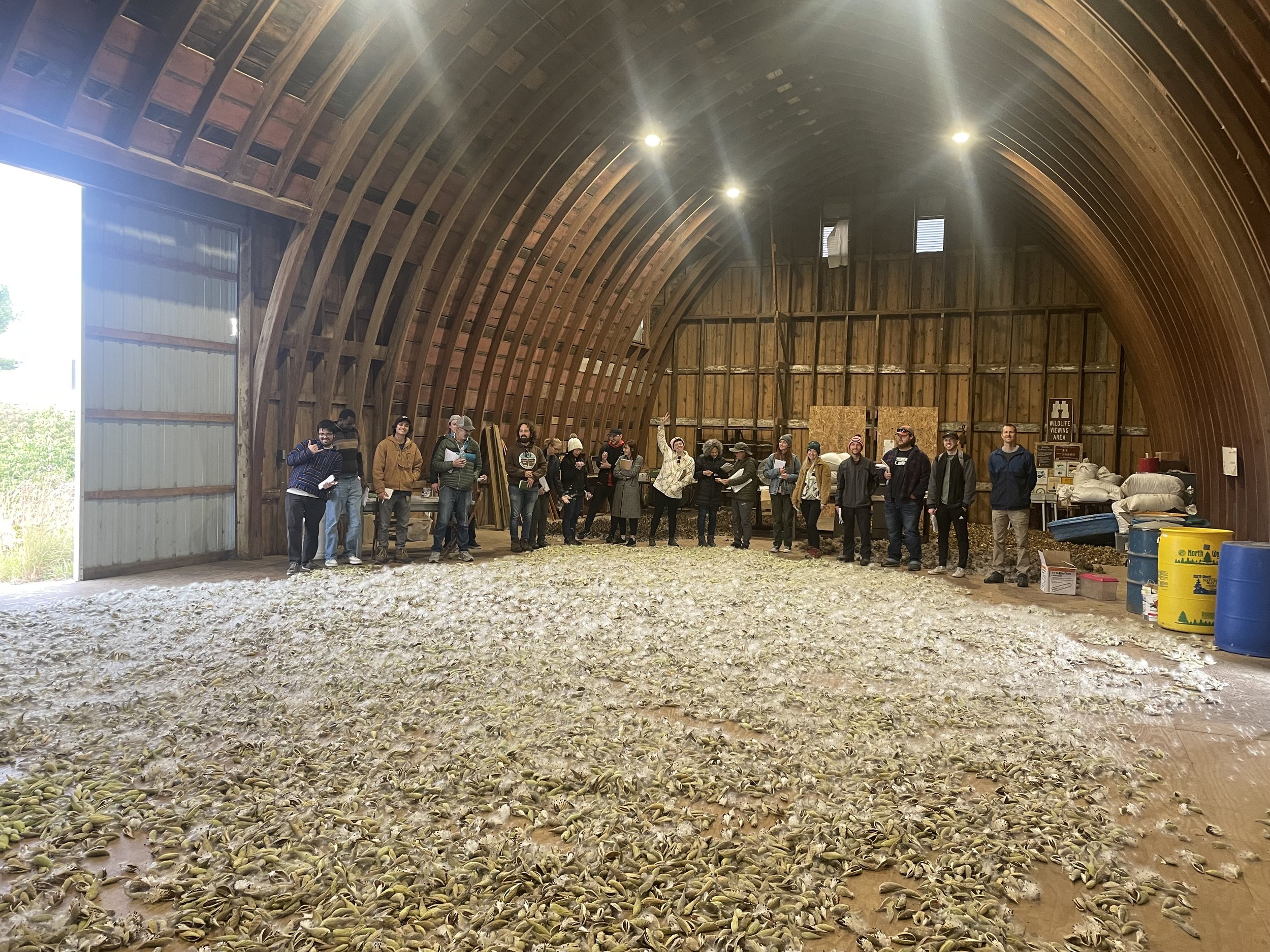This was our 12th year of tagging monarch butterflies and together with partners, staff and volunteers, we have reached a major milestone: tagging 10,445 monarchs since 2012!
A tagged monarch butterfly nectars on a goldenrod at Goose Pond Sanctuary. Photo by Arlene Koziol
The 2023 monarch tagging season began on August 22 with Graham tagging the first monarch and ended on October 2 with Jim Otto tagging 15 monarchs. Last fall, only 320 monarchs were tagged at Goose Pond, but this year we tagged 815. Within the first five (of nine total) field trip sessions, we had already broken last year’s record. Jim Otto, Goose Pond volunteer and insect enthusiast, tagged 212 by himself! Partners also tagged another 247 at other locations, meaning we cumulatively tagged 1,062 monarchs migrating through south-central Wisconsin.
Monarch tagging is an excellent way to connect people of all ages and backgrounds with nature. Goose Pond staff hosted nine monarch tagging sessions: six for Badgerland Bird Alliance, two for Natural Resources Foundation, and one for Discovery Charter School. In total, 80 children (as young as five years old) and 151 adults (as old as 90 years old) visited Goose Pond to learn about monarch butterflies and to assist with this important citizen science effort. Jerry Martin (age 90) was pleased to be able to release eight butterflies. Thank you to everyone that assisted with tagging monarchs this fall!
A group of field trip participants gather around as one is released after being tagged. Bon voyage, monarch! Photo by Mark Martin
Weather greatly impacted our numbers. The first field trip day was cloudy and windy and we ended up catching and tagging only 50 monarchs. We quickly learned that the monarchs were seeking shelter on scattered shrubs in the prairie rather than nectaring in the open. However, the second field trip day was sunny and calm, helping us to catch and tag 250 monarchs.
This was the best year for tagging monarchs early in their migration, as well as late in the season, both of which are a priority for Monarch Watch. In the past 13 years, we averaged 45% females. This year, we were surprised to see that females made up 60% of the late season monarchs.
On October 3, Susan Foote-Martin was using her field glasses to watch a Sandhill Crane calling and flying high in the air. Just below, she spotted three monarch butterflies heading south. This was a first for Sue, who imagined that they were at such a high altitude that they could probably see Mexico in the far distant horizon.
The last two monarchs were seen at Goose Pond on October 11 when Dorothy Haines, BBA’s oldest member, was out with her son for a visit.
A group of UW-Madison students visit Goose Pond to learn about wildlife and landscape management. Plus they got to see the incredible spread of common milkweed pods drying in the Jungemann Barn, waiting to be cleaned, packaged, and distributed to partners doing large-scale habitat restoration projects. Photo by Graham Steinhauer / Badgerland Bird Alliance
This fall, the wooden floor of the Jungemann Barn was 70% full of common milkweed pods collected by Goose Pond staff, many of BBA volunteers, and Columbia/Marquette County Pheasants Forever volunteers. This is the fourth year volunteers collected common milkweed pods in large quantities. Last year, we processed 129 pounds of common milkweed seed and distributed it to DNR managers, conservation organizations, private landowners, and other partners. In the first three years we provided enough common milkweed seed to plant 2,715 acres of restored prairie. In a couple of years it is estimated that over 45,000 monarchs will annually reach monarch reserves in Mexico from the 2,700 acres we’ve helped plant. If you are looking for milkweed seed or know of others please have them fill out the form on our Milkweed Request page!
by Mark Martin, Susan Foote-Martin, Emma Raasch and Graham Steinhauer, the Goose Pond Sanctuary team










